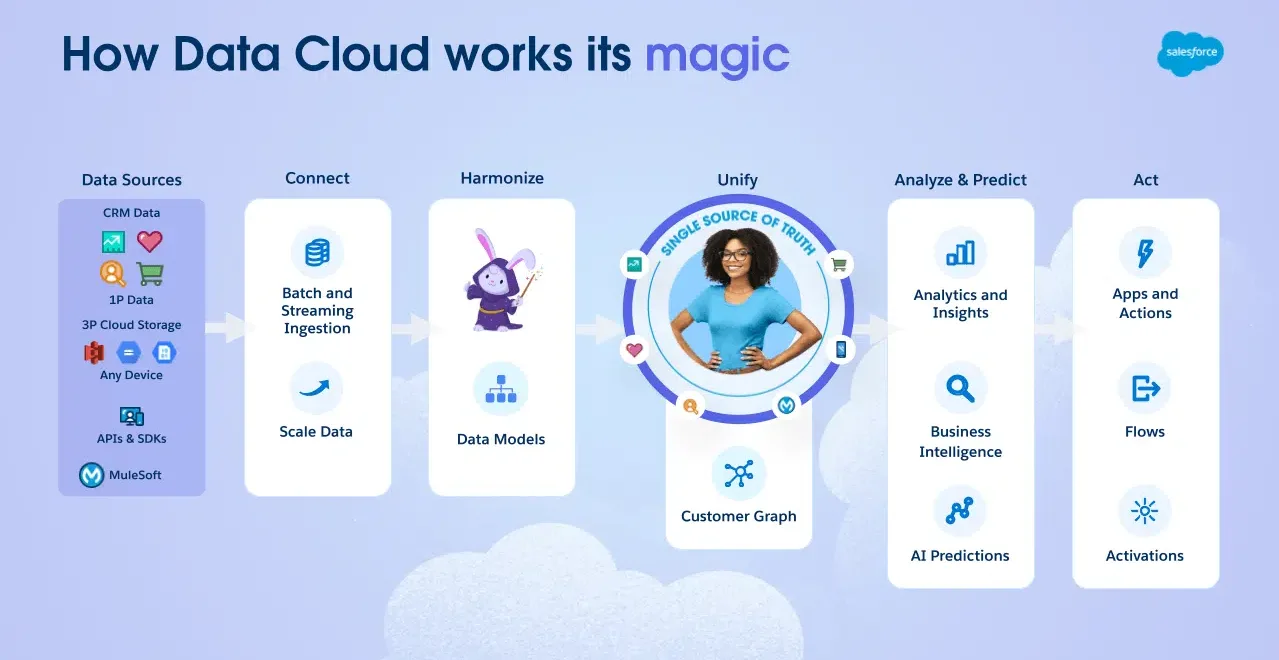In today’s data-driven world, businesses rely on actionable insights to drive growth, improve customer experiences, and stay competitive. Salesforce’s Data Cloud has been a key player in providing valuable data solutions for businesses. In this blog post, we’ll dive into the latest developments in Salesforce’s Data Cloud, highlighting how these advancements are shaping the future of data-driven decision-making.
What is Salesforce’s Data Cloud?
Before we explore the latest developments, let’s briefly recap what Salesforce’s Data Cloud is all about. It’s a powerful data platform that aggregates and analyzes vast amounts of data from various sources to provide businesses with a comprehensive view of their customers, prospects, and markets. By leveraging this data, organizations can personalize marketing campaigns, enhance customer service, and make informed strategic decisions.
The Latest Innovations:
- Integration with Customer 360: Salesforce’s Customer 360 platform aims to provide a unified customer profile across various Salesforce applications. The Data Cloud has recently been integrated with Customer 360, allowing businesses to seamlessly access and utilize data within their Salesforce ecosystem. This integration streamlines data management and enhances cross-channel marketing efforts.
- Enhanced Data Privacy and Compliance: As data privacy regulations continue to evolve globally, Salesforce’s Data Cloud has prioritized compliance and data protection. It now offers enhanced data privacy tools, ensuring that businesses can use customer data in a way that respects regulatory requirements like GDPR and CCPA. This not only minimizes legal risks but also builds trust with customers.
- AI and Machine Learning Integration: Salesforce’s Data Cloud has incorporated advanced AI and machine learning capabilities to provide predictive and prescriptive analytics. This means businesses can now proactively identify trends, segment audiences, and recommend actions based on data-driven insights. These AI-driven features empower organizations to make data-backed decisions more efficiently.
- Expanded Data Sources: The Data Cloud continues to expand its data sources, allowing businesses to access an even broader spectrum of information. This includes third-party data providers, industry-specific data, and real-time data feeds. With a wider pool of data, organizations can gain deeper insights into market dynamics and customer behaviors.
- Data Collaboration and Sharing: Salesforce has introduced features that enable data collaboration and sharing between organizations. This enables businesses to create data-sharing ecosystems, benefiting from collective insights while maintaining control over their proprietary data. This collaborative approach fosters innovation and industry-specific solutions.
- Data Governance Tools: Data quality and governance are critical. Salesforce’s Data Cloud now offers robust data governance tools, helping businesses maintain data accuracy, consistency, and reliability. This ensures that data-driven decisions are based on trustworthy information.
Conclusion:
Salesforce’s Data Cloud continues to evolve, keeping pace with the rapidly changing data landscape. With these latest developments, businesses can harness the power of data more effectively, driving growth and innovation. Whether it’s through AI-driven insights, enhanced privacy controls, or expanded data sources, Salesforce’s Data Cloud remains a key player in helping organizations stay competitive in today’s data-centric world. Embracing these developments can lead to smarter decisions, better customer experiences, and a more competitive edge in the market.




